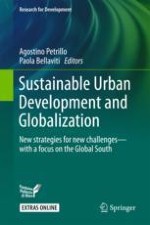This book equips readers with a deeper understanding of the challenges posed by radical socioeconomic, environmental, and cultural changes due to globalization and describes effective, sustainable solutions to these challenges. The focus is especially on the rapid urbanization processes in countries of the Global South, which are giving rise to dramatic new problems of spatial and social inequality and difficult environmental challenges in relation to climate change. Readers will gain skills and knowledge that will help them to develop an integrated, multidisciplinary approach to planning, design, and management of urban settlements and territories in contexts with a high level of social, economic, territorial, and landscape vulnerability. The coverage includes, for example, strategies to promote social inclusion, improve housing quality, ensure adequate education, protect cultural heritage, enhance risk management, and address issues in the food-energy-water nexus. Among the authors are leading experts from the Polytechnic University of Milan, where a multidisciplinary set of studies and research projects in the field have been undertaken in recent years.
